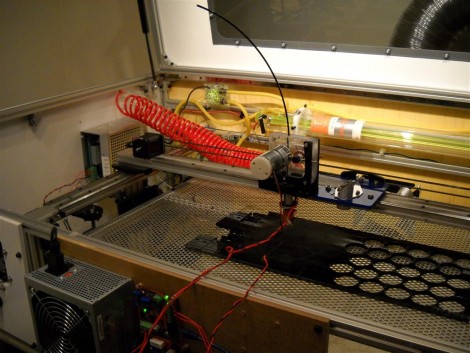
Here’s a watering can and water vortex that are controlled with a webkit browser interface. The interface displays a drawing of the watering can on your browser. If you grab one of the handles on the circle around the image and move it, the can will rotate as well.
Okay, so this isn’t going to change the world and actually presents a fairly useless watering setup. But [Ben] seems to be a master of fabrication and that’s what we appreciate in this build. The watering can is solidly mounted and moves fluidly with seemingly little effort from the motor. He uses a spring to keep the rope loop taut, sourcing a castor wheel and automotive power-window motor to provide the motion. The hinged base on which the can sits has a potentiometer in it, used to measure the current position of the watering can. Remember these techniques as they’ll come in handy in your future builds.
There’s also a little bonus at the end of the video after the break. We wondered what [Ben] might use that power drill controller hack for. Looks like it makes an appearance in his water vortex work.
















